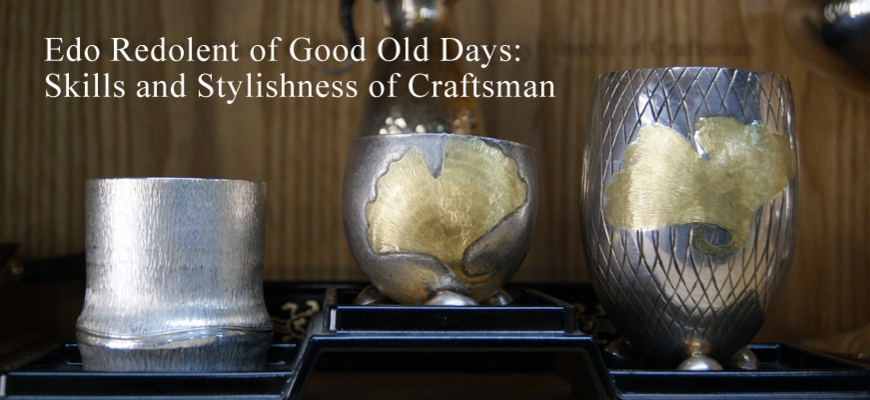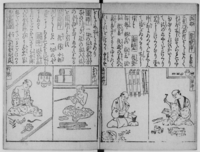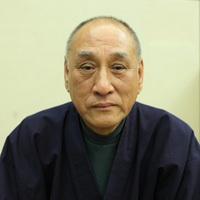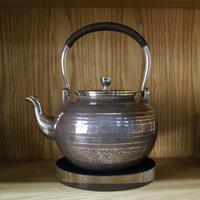What is Tokyo-style silverware?
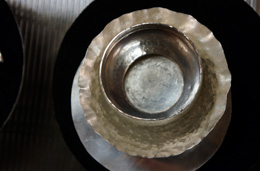
As a family of craftsmen
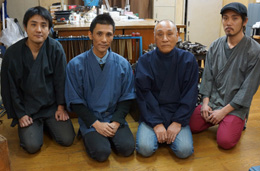
We are a family of traditional craftsmen. Now that we work as traditional craftsmen, we dedicate ourselves to make traditional crafts. One of my ancestors is Zennojo Hirata who is famous for silverware production. I am the 11th descendant of Zennojo.
As a silversmith
Could you tell me about the reason you became a craftsman?
My father was a craftsman, so I took over his job. Since I was born to a family of craftsmen, I played beside my father since my childhood. I began to seriously learn silverware making after I graduated from junior high school. Although I knew general processes of silverware making, I should work as an underling. I began by visiting outsourcees as a messenger. In the past, there was no car, so I was pedaling around all day.
How many years have you done this job?
I have done this job since I was 16. I am now 68 years old, so I have done this job for 52 years.
Have details of your job changed?
It has changed a lot with the times. When I learned silverware making, kettles and small teapots were mainly made. Later, there was a golf boom in Japan, so many trophies for golf were ordered. I made those trophies all day and year round.
The reason kettles are not sold well is that electric kettles and plastic bottles become widespread. You do not need to boil a kettle. However, water boiled in a kettle is more delicious. Compared to iron, silver has better thermal conductivity, so water in a silver kettle boils faster. Although there are a variety of kettles, such as a brass kettle, water boiled in a silver kettle especially tastes better.
Tokyo-style silverware
Have new methods of making silverware been devised?
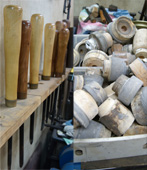
(Spatulas and wooden models which are used in the spinning process)
What is the difference between Tokyo-style silverware and silverware made in other regions?
In terms of silverware, Tokyo is the most thriving region. There are many craftsmen in Taito, Bunkyo and Arakawa Cities. When many craftsmen are concentrated in the cities, hardware shops also come to the cities. Craftsmen can easily buy a variety of tools at the shops. Although craftsmen can work in other areas, it is better to live in those cities.
Although this is just a digression, gold leaves have been made in Kanazawa. In the past, the Edo shogunate strictly controlled gold leaf production. One gram of gold weighs as much as 1-yen coin, and it stretches to several square meters. Such a technique exists only in Kanazawa. Since gold leaves could be easily obtained in Edo, craftsmen could use them to make crafts. In this way, cultures and histories in producing centers have reasonable grounds.
How long does silverware last?
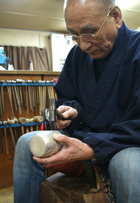
What are the characteristics of silverware?
Aside from the value of silver itself as a valuable material, what is good about silverware is that, if you drink something out of a silver cup, it tastes differently. It becomes mellow and mild, and always tastes good. If you drink vinegar out of a silver cup, you feel it is very tasty. A glass cup does not change the taste. I wondered if the taste really changed, so I once asked the Taste and Aroma Strategic Research Institute located in Hodogaya (now relocated to Kayaba-cho) to study silverware. As a result, it turns out that the taste actually changes. It is numerically proved. I got a stamp of approval.
Manufacturing processes
Could you tell me about the manufacturing processes?
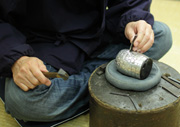
What are the traditional techniques?
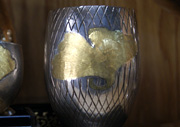
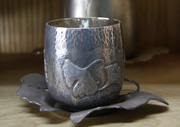
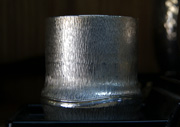
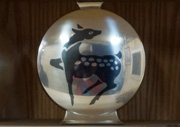
Carrying on craftsmanship that has been handed down for 11 generations
What point is worth doing as a traditional craftsman?
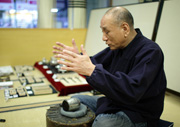
What is Tokyo-style silverware?

In medieval Europe, in order not to be poisoned, people used silver tableware, taking advantage of the property of silver, of which color changes when being sulfurated. In this way, silverware has closely been related to lives of people from old times. In Japan, since silver coins were struck at a silver mint, which was located in present Ginza, in the Edo Period and silver accessories were popular among people in the Genroku era, a period when the economy developed and prospered, Tokyo has thrived as the center of silverware production.
As a family of craftsmen

Kazuo, a father and master, three sons and a daughter are engaged in making traditional crafts.
We are a family of traditional craftsmen. Now that we work as traditional craftsmen, we dedicate ourselves to make traditional crafts. One of my ancestors is Zennojo Hirata who is famous for silverware production. I am the 11th descendant of Zennojo.






